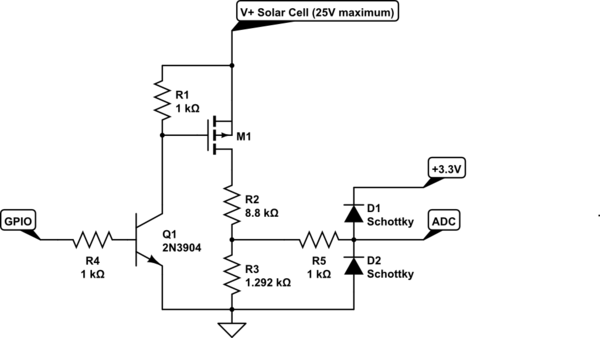Can someone please just sanity check my math?
I'm trying to design two voltage divider networks, one for the solar panel and one for a LiPo battery so that I can connect them to my 3.3V ADC (RP2040)
RP2040 Datasheet: https://datasheets.raspberrypi.org/rp2040/rp2040-datasheet.pdf
Page 579 has some info on the ADC.
Someone else also performed their own ADC Tests: https://pico-adc.markomo.me/
I've tried to pick as large a resistance as I have in my box of parts to minimise current drain, which I believe is the correct thing to do.
The 12V solar panel open circuit voltage is ~20V. Although it will never be open, I'm designing to allow for overhead just in case.
$$ Vout = \frac{(25V)(68,000 Ω)}{68,000 Ω + 470,000 Ω} = 3.16V \because V_{\text{out}} = \frac{V_{\text{in}}(R_2)}{(R_1 + R_2)} $$
$$ I =\frac{25V}{68,000 Ω + 220,000 Ω} = 0.0000465A \because I = \frac{U}{R} $$
The same for my LiPo battery, where the maximum voltage will be 4.7V
$$ V_{\text{out}} = \frac{(4.7\text{ V})(470,000 Ω)}{220,000 Ω + 470,000 Ω} = 3.2\text{ V} $$
$$ I =\frac{4.7\text{ V}}{220,000 Ω + 470,000 Ω} = 0.00000681\text{ A} $$
If I've done my math right, there should be 0.00116 Watts and 0.000032 Watts dissipated respectively.
Do you think I'll have any problems with these? Are they safe? Are there better values to pick?

